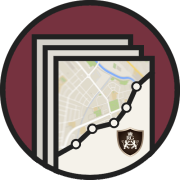Time is Running Out to Repay Covid-era 401(k), IRA Withdrawals and Claim a Tax Refund
by Peter Rizzo

The CARES Act, a federal pandemic-relief law, allowed investors to withdraw up to $100,000 in coronavirus-related distributions from 401(k) plans and individual retirement accounts in 2020.
These CRDs carried tax benefits. If an investor repaid all or part of a distribution within three years, they could claim a tax refund for the income taxes paid on the withdrawal.
That three-year clock is running out for many people.
Retirement savers who withdrew money from their accounts in the early days of the Covid-19 pandemic may have just days or weeks left to repay those funds and reap the tax benefits.
The CARES Act — a federal relief law passed in March 2020 — allowed savers to pull up to $100,000 from individual retirement accounts and employer-sponsored arrangements like 401(k) plans. The law provided special tax benefits for the withdrawals.
These coronavirus-related distributions were meant as a financial lifeline for cash-strapped households during a time of economic carnage and the highest rate of unemployment since the Great Depression.
Savers got a tax break for these CRDs, which were only available in 2020. For one, the law waived the typical 10% tax penalty for early retirement withdrawals.
And while savers owed income tax on CRDs, they could recoup some or all of those income taxes later by partly or fully repaying their distribution. If repaid, the distributions essentially became tax-free loans.
Here’s the catch: Savers had a three-year window within which to make that repayment. Otherwise, they’d no longer be eligible for a tax refund.
The three-year clock started the day after they received the funds — meaning the deadline for many people is fast approaching.
“I’d think the majority of the distributions were taken right around this time through the end of [2020],” said Sean Deviney, a certified financial planner based in Fort Lauderdale, Florida.
That’s because it likely took a few weeks or months for employers and retirement plan administrators to set up the infrastructure to facilitate the distributions, said Deviney, a financial advisor and director at Provenance Wealth Advisors.
Hundreds of thousands took distributions
Data suggests hundreds of thousands of people took coronavirus-related distributions — and that few have repaid it.
Nearly 6% of investors in workplace retirement plans took a CRD in 2020, according to internal administrative data from Vanguard Group. That amounts to about 268,000 people out of 4.7 million retirement investors for whom Vanguard provided administrative services that year.
However, less than 1% of people who took a CRD had repaid it by the end of 2021, according to Vanguard’s most recent data.
“Most people forgot about what they did last week, let alone three years ago”. – Sean Deviney, Director at Provenance Wealth Advisors
“People have completely forgotten about it,” Deviney said of the distributions.
Savers with the ability to repay a distribution stand to get a sizable tax benefit. Plus, they’d be investing money back into a retirement account that carries tax-preferred investment growth, Deviney said.
Amended return necessary to claim refund
Investors who repay all or part of their CRD by the three-year deadline must file an amended tax return to claim a tax refund, according to the IRS.
Investors had the option to spread their income-tax liability over three years. For example, let’s say an investor took a $9,000 distribution in 2020. The individual had the option to report that income in chunks: $3,000 on federal tax returns for 2020, 2021 and 2022. This person would have to file an amended tax return for each year.
Questions? Talk to your CPA or Tax preparer for details.

